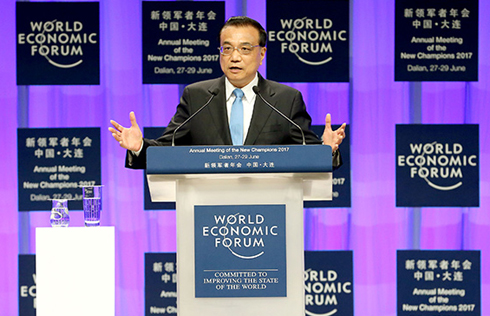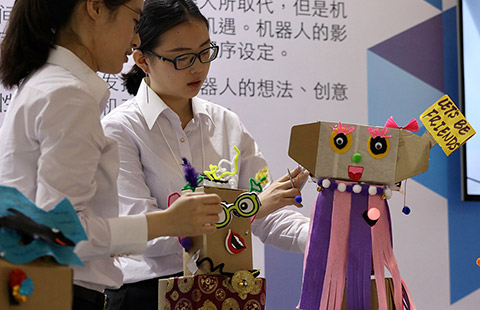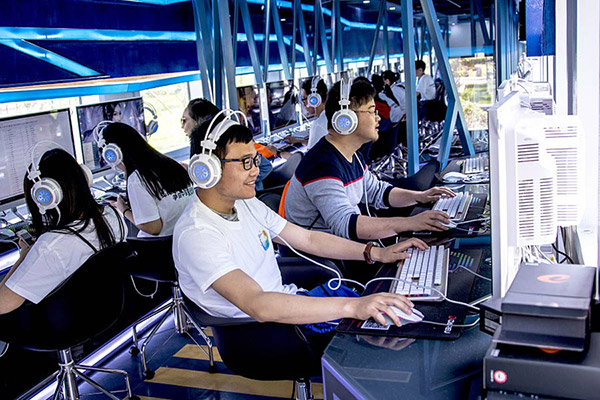US beef returning to Chinese dining tables
SHANGHAI — As Chinese and US representatives cut into a rib in Beijing on Friday to mark the return of US beef to China after a 14-year absence, customers in Shanghai also started to receive the US beef they had pre-ordered online via domestic retailers.
The beef sent to Shanghai homes via retailers like FruitDay is of the highest quality in terms of tenderness, juiciness, and flavor according to US Department of Agriculture (USDA) standards, and is known as Prime grade.
The reopening of the Chinese market to US beef, one of the first results from the China-United States 100-day action plan reached in May, ends a ban initially triggered by concerns over mad cow disease in 2003, and may well start a new chapter in bilateral economic and trade cooperation.
Growing appetite
"My colleagues and I will get busier as US beef is returning," said Lyu Ruiqing, head of Shenhong Cold Storage Company, as he inspected a refrigeration house in suburban Shanghai, where boxes of beef imported from Australia and some South American countries, as well as domestic beef are stored.
Lyu has been in the industry for over 30 years. US beef used to be extremely popular in China, he recalled, accounting for as much as 70 percent of China's beef imports at its peak.
Driven by an ever-expanding middle class, China, the world's biggest pork consumer, is also a growing beef market fed by both domestic and foreign beef.
Data from China Customs showed that the country's beef imports reached around $2.5 billion in 2016, compared to $254 million in 2012. However, per capita consumption is still low compared to the United States and Australia.
"The market has great potential. Beef is increasingly popular among Chinese. In my restaurant, about 70 percent of the customers are local and many are young people," said Liu Xin, owner of a steakhouse in downtown Shanghai.
"Currently, we mainly serve dishes cooked with Australian beef, but we are ready to change the menu when US beef is available this month," said Liu, who is planning to open another steakhouse in the city.??
Competition at dining table
"In the last five years, China became the world's second largest beef importer. Australia has enjoyed exceptional opportunities in exporting beef to China. Competition started in 2015 when Brazil and Argentina were also granted market access," said Yan Hongwei, vice president of Shanghai Haibo Logistics, a major meat dealer in China.
It remains to be seen how US beef will compete with products from the southern hemisphere.
"Flavor comes first," said Liu, the chef-turned-restaurant owner. Over the years, Chinese consumers have been accustomed to eating and cooking with Australian, Argentine or Brazilian beef, but American beef might be meatier and juicier, he said.
Price also matters, said Tao Jun, CEO of Sizzle Market, a chain store focusing on beef sales. He considered the return of American beef as good news as the price of imported beef may drop.
"Both Australian and American beef target the middle and high-end markets. Generally speaking, American beef is more cost-effective," said Tao, expecting that Australian dealers might try to make prices more competitive to avoid a market loss.
Seeing the great market potential, many Chinese companies are actively seeking cooperation with American beef dealers, while many beef processing plants in the United States are also very excited about the opportunities.
However, the picture is not fully painted yet.
China has published certain details for quality and quarantine checks: the age of the beef cattle should be less than 30 months; beef importers should be registered at the Certification and Accreditation Administration of China; cattle must be traceable to their birth farm; and China-bound beef will have to be free of residues of synthetic hormones and banned additive such as ractopamine.
Yet industry sources estimate that less than 10 percent of US beef meets the requirements at the present stage, which means export volumes will be limited in the initial phase.
"There hasn't been American beef coming here officially over ten years. China has some requirements for American suppliers to comply with. So it will begin slowly, but I do believe there's a lot of potential here," said Kenneth Jarrett, president of the American Chamber of Commerce in Shanghai.
"In the short term, beef from Australia, New Zealand, and Brazil will probably still dominate the imported market in China. Over the long term, it is possible for US beef to perform well, with its taste, price and service," said Yan.
Finding the middle ground
The return of US beef to China and, in reciprocity, China's cooked poultry to the United States, are at the forefront of the China-United States 100-day action plan, which also covers areas including financial services, investment, and energy.
"Clearly, the agreement reflects a starting point for the two nations to reshape their trade and economic relationship," said Zhou Hao, senior Asian economist with Commerzbank.
"To achieve a win-win outcome, China and the United States should carry out structural reforms and strengthen economic cooperation rather than just narrow the trade deficit," said Bai Ming, a research fellow at the Chinese Academy of International Trade and Economic Cooperation.
According to Jarrett, feedback from US companies towards the 100-day action plan is positive. "We see it as a good first step. The ten listed items have been carefully designed. They can bring very tangible benefits. People are excited about that," he said.
There has been a lot of discussion on what the next step will be. "China and the United States understand each other pretty well. They are finding the middle ground. I think financial services will probably be the next big area," Jarrett added.

























